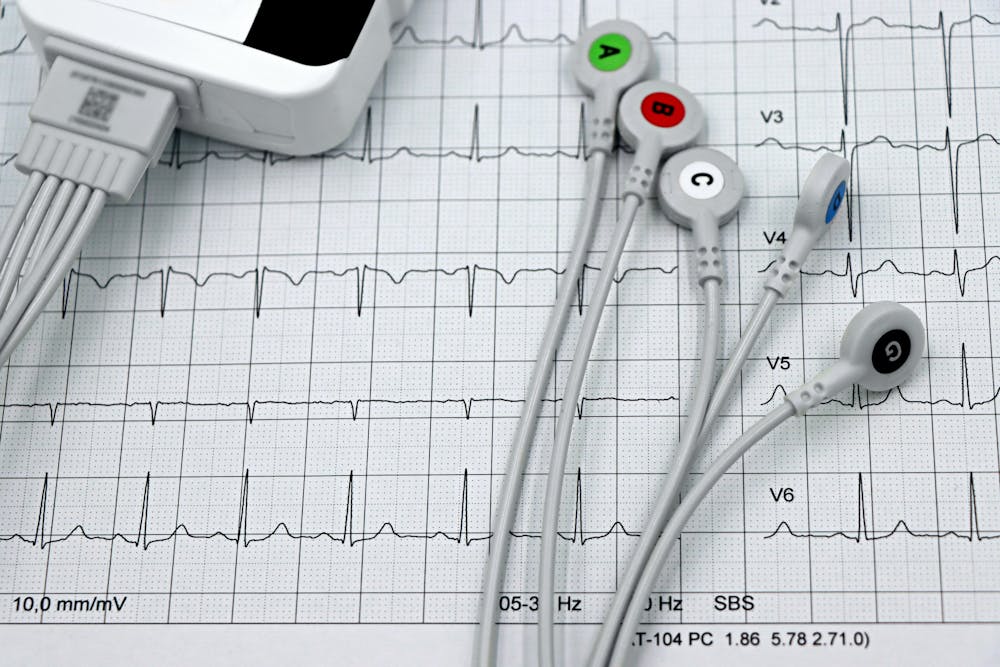Surface-enhanced Raman spectroscopy (SERS) may revolutionize heart attack diagnosis. The SERS technique is a valuable tool for the detection of trace amounts of contaminants in food and water or the identification of biological samples. Its applications range from cancer diagnosis to the detection of substances for homeland security and forensic investigations. Regarding its most recent clinical applications, SERS has been adapted to diagnose heart attacks in research settings at impressive speeds and accuracy levels.
SERS relies on light to identify molecular structures. When a photon collides with a material, it is often re-emitted in such a way that changes its direction, intensity or frequency. This change in photon behavior is referred to as light scattering and it can be used to identify the structure of the molecule a photon collided with. What SERS does, in turn, is use a nanostructured metallic surface to boost the signals from light scattering which might otherwise be too low to detect.
Nonetheless, performance of the SERS technique, while robust in research and scientific literature, has not translated to effective, quantitative detection of real samples in clinical settings. Issues with SERS performance are driven by multiple design challenges. The amplification of light scattering, for instance, relies on magnetic and electric fields. Yet, in many SERS designs the contribution from magnetic fields is not optimized, meaning that amplification is not as effective as it could be. In addition, SERS signals may fluctuate. Both factors have hindered the incorporation of SERS in clinical settings, including for the use of detecting biomarkers associated with heart attacks.
As a condition experienced by hundreds of thousands of Americans each year, heart attacks are a pressing issue that result in fatalities and long-term health conditions. On a biological level, heart attacks occur due to there being a shortage of oxygen in heart muscles. As a result, the stressed heart releases a myriad of enzymes and proteins that function as biomarkers. Myoglobin and troponin-I proteins in the blood, for instance, alert health care workers that a patient is experiencing a heart attack. In terms of treatment, restoring blood flow to the heart as quickly as possible after the onset of an attack mitigates tissue damage.
A limiting factor to speedy treatment is the tricky and time-consuming nature of heart attack diagnosis. First, signs of a heart attack vary dramatically, especially when considering demographics such as sex and race. While chest pain is a well-recognized symptom of heart attacks, neck and jaw pain or palpitations are also indications of heart attack. Interestingly, women are more likely to experience these symptoms than men. Overall, the presentation of physiological symptoms is highly varied across the population and may, subsequently, lead to delays in seeking time-sensitive treatment.
Nonetheless, physiological symptoms are not stand-alone diagnostic tools for heart attacks, which often require further confirmation and assessment of damage. Once in the hospital, electrocardiograms and blood tests may be conducted. Given that analysis of blood tests may take multiple hours, the diagnostic process can be significantly long. As such, while speedy treatment of heart attacks is imperative to reduce tissue damage, there are considerable obstacles to diagnosing this condition quickly.
A recent study conducted by lead researcher Peng Zheng made strides in determining how to increase the efficiency of SERS technology in order to detect biomarkers. While geared towards improving diagnosis in clinical settings, this technology could potentially be adapted to detect heart attacks anywhere, at any time.
In practice, the group designed a chip surface especially adept at enhancing electric and magnetic fields. The surface mitigates fluctuations and more effectively amplifies light scattering. By focusing on how a photon changes frequency rather than intensity after collision, the chip also produces a more accurate measure of a molecule’s structure. The result is a technology that can accurately detect biomarkers, even when the molecules are only present in low amounts.
Taking under seven minutes rather than hours, the blood test would also slash diagnosis time significantly. Its accuracy and non-invasive nature make it highly adaptable for potential use by health care professors on the move or even an ordinary person in an emergency.
As a technology that could be applied outside of clinical settings, this “metasurface” chip may shrink obstacles associated with heart attack diagnosis to help patients receive treatment sooner rather than later. Beyond heart attack biomarkers, metasurface in SERS can be modified to detect other molecules, speaking to potential applications for infectious diseases, cancer and therapeutics.





